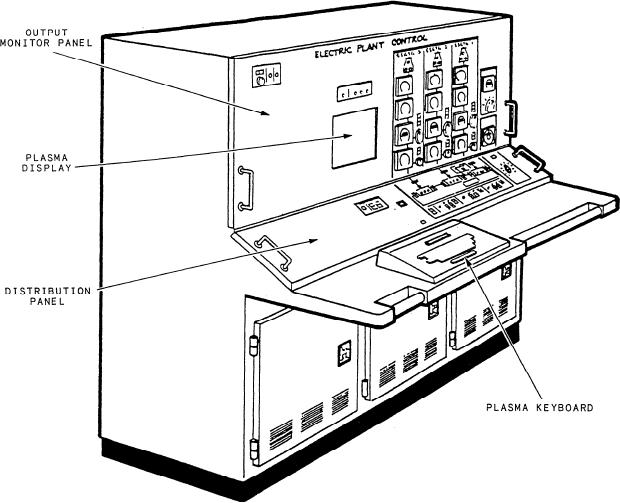
Figure 3-10.--EPCC panel locations.
4. Gas turbine control
excitation. The EXCOP is enabled by the LOCOP when
gas turbine speed exceeds 12,225 rpm.
5. Generator control
A SSGTG has sensors to allow remote monitoring
6. Load shedding system operation
of its gas turbine, generator, and supporting systems.
7. Air-conditioning (A/C) plant operation
The EPCC receives sensory information in one of the
8. 4 0 0 - H Z power system operation
following four ways:
Again, refer to the EOSS, the EOP, and technical
1. Directly from controllers or contact switches
manuals for a detailed description of the operation of
2. Directly from temperature or level monitoring
these systems.
devices
SSGTG Control and Monitoring
3. Discrete inputs from the SSGTG LOCOP
4. Analog inputs from the SSGTG LOCOP
Most SSGTG control functions reside in its LOCOP
and exciter control panel (EXCOP). The EPCC and
Inputs to the EPCC are processed by its computer
switchboard control stations provide only discrete
to determine if an alarm condition exists. Alarms are
i n p u t s to the LOCOP and EXCOP. The LOCOP
indicated on the PDU and by an EPCC control panel
provides monitoring for the gas turbine and generator,
alarm indicator. Eight alarm conditions for each SSGTG
and control for the gas turbine. This includes speed
are displayed by specific alarm indicators at the EPCC.
control, which the LOCOP governor uses to regulate
All other alarms are indicated by the appropriate
g e n e r a t o r output frequency. The EXCOP controls
generator output voltage by regulating generator field
SSGTG summary alarm light above the PDU.
3-25

